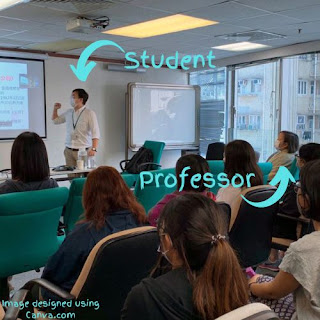Real Online Course Design Part I: Beginning
It's that time of year again: time for me to plan a new batch of classes for Spring 2023, three of which are online.
When I prepare for classes, I have gotten in the habit of completely starting over. I erase everything I had previously used for the course, and begin anew by asking, "so what might be of benefit to me and my students this coming semester, given the courses I will be teaching?" Those courses are: Human Development, Health Psychology, and Introduction to Counseling. (I will also be teaching Behavioral Research, but it will be in person.)
It will be my first time teaching counseling theories, so I'm excited about that. I am the opposite of excited--incited?--to be teaching human development, which means I will need to hit the reset key a few times on how I had been doing it, and possibly ctrl-alt-delete.
I have been brainstorming how these courses will go, and wanted to show my work, so to speak. I created a document on my laptop, which I titled "Structuring Online Courses." I do not yet have a good feel for the online classroom environment, even though I have been hosting courses there for over 10 years. I have been dedicating time to studying the online student experience, and have a few articles coming out about it. But I am still in search of the digital safety pin that will hold it all together.
This uncertainty is why I began my course outlines with the following items, which, if followed, I believe will lead to a worthwhile online classroom experience for my students:
Goal: To provide students with the following:
- clear structure with expectations and deadlines
- And the following AST indicators:
- An opportunity to propose their own topic/application
- Choice between topics
- Explanatory rationale for why each topic/objective is important
- Opportunities to connect the work with people who are in their lives
- Invitational language for assignments/activities
- E-mail exchanges where I acknowledge/accept negative emotion
The two main bullet-points (structure and AST) are, in my opinion, the most important ingredients for an online course. (A few decades of self-determination theory in the classroom would agree. However, research on SDT in online classrooms is weak.) By structure, I am talking about having a detailed schedule, detailed instructions, and detailed expectations for students. This is particularly important for online students, because they are often juggling work and family responsibilities, and need to be able to plan their schedule around course expectations that are clear and easy to follow.
For the six AST indicators, I followed the 6-7 strategies for supporting student autonomy (AST scholar Johnmarshall Reeve grew the list of strategies by one in the last few years). For each number, I provide an example of how I might support student autonomy using the strategy. "Choosing between topics" isn't exactly "Inviting students to pursue their interests," but it does allow them to exercise some autonomy in the process.
Next I began thinking in print about how I might structure the courses around our school's learning objectives (and their accompanying rubrics). My first thought was, "That's a lot of time spent evaluating." So I estimated my own time expenditure to see if it was manageable:
Rubric-scoring on 35 short essays, four times per semester.
· Time spent 6 minutes x 35 students = 210 minutes or 3.5 hours (4x per semester)
o Reading: 2 minutes
o Grading: 2 minutes
o Responding: 2 minutes
· Grading structure (allows students to develop over the semester):
o First response: 10%
o Second response: 20%
o Third Response: 30%
o Fourth Response: 40%
o TOTAL: 100%
· Grading Scheme:
o No submission= 0%
o Late submission= Score below minus 20%
o rubric score of 0=70%
o rubric score of 1=80%
o rubric score of 2=90%
o rubric score of 3=100%
o rubric score of 4=110%
I decided that four short essay submissions per class would be reasonable for me to evaluate. Possibly as many as eight. But I also don't like setting myself up for so much evaluating. I much prefer responding to students personally. I don't want students to feel as though they are interacting with a rubic. I want them to feel like they're interacting with a human person (who happens to dislike rubrics). Therefore I recognize a division in myself about how to structure the courses: by structure, do I really need to enforce a formal objective (reading comprehension, analytic skill, etc.)?
Yes: the rubric will help challenge students to dig deeper than they otherwise might with respect to the skills the university. The rubrics will provide added structure to help guide students through activities and their involvement with the course.
No: Rubrics will only invite students to speak with the intention of trying to please the rubric.
I'm not sure where I land on this right now, so I will have to think about it some more.


Comments
Post a Comment